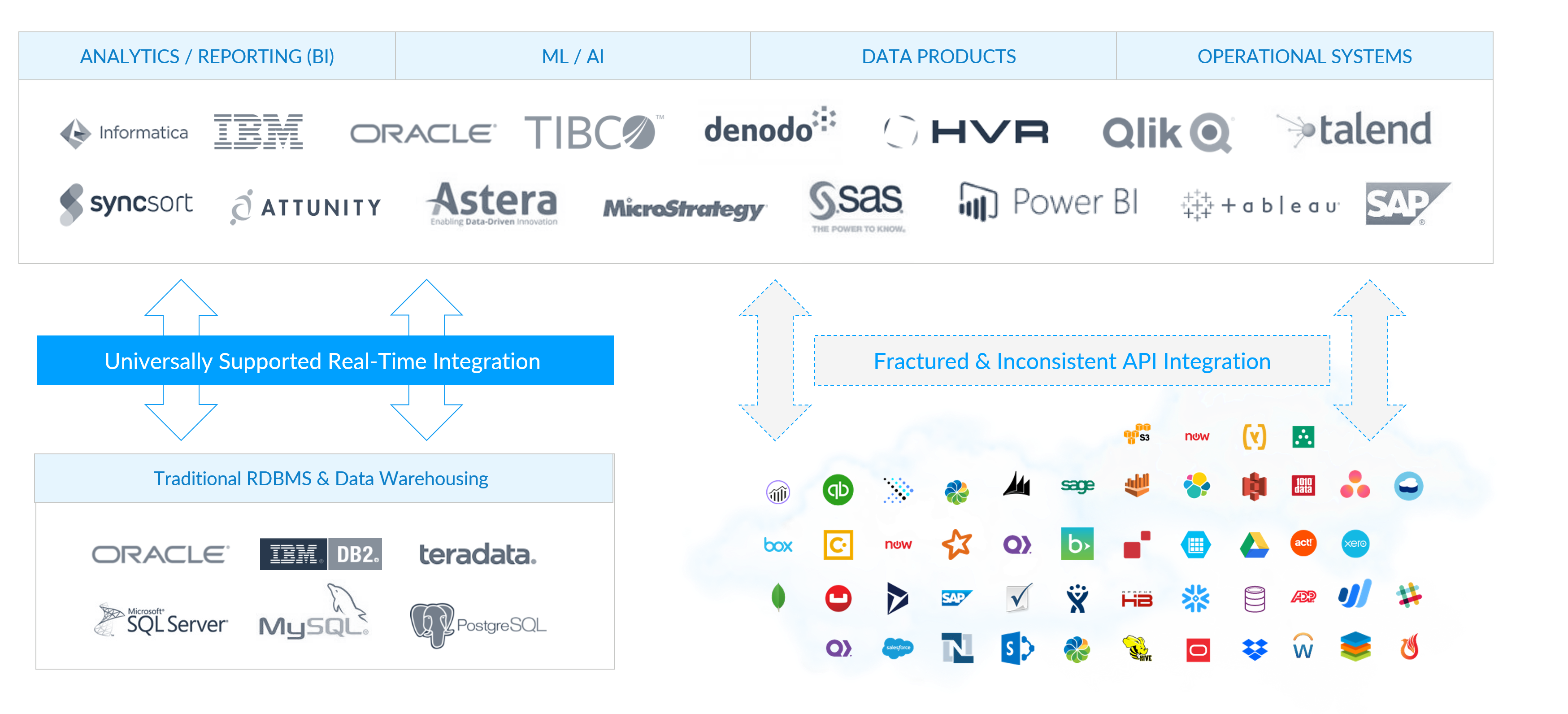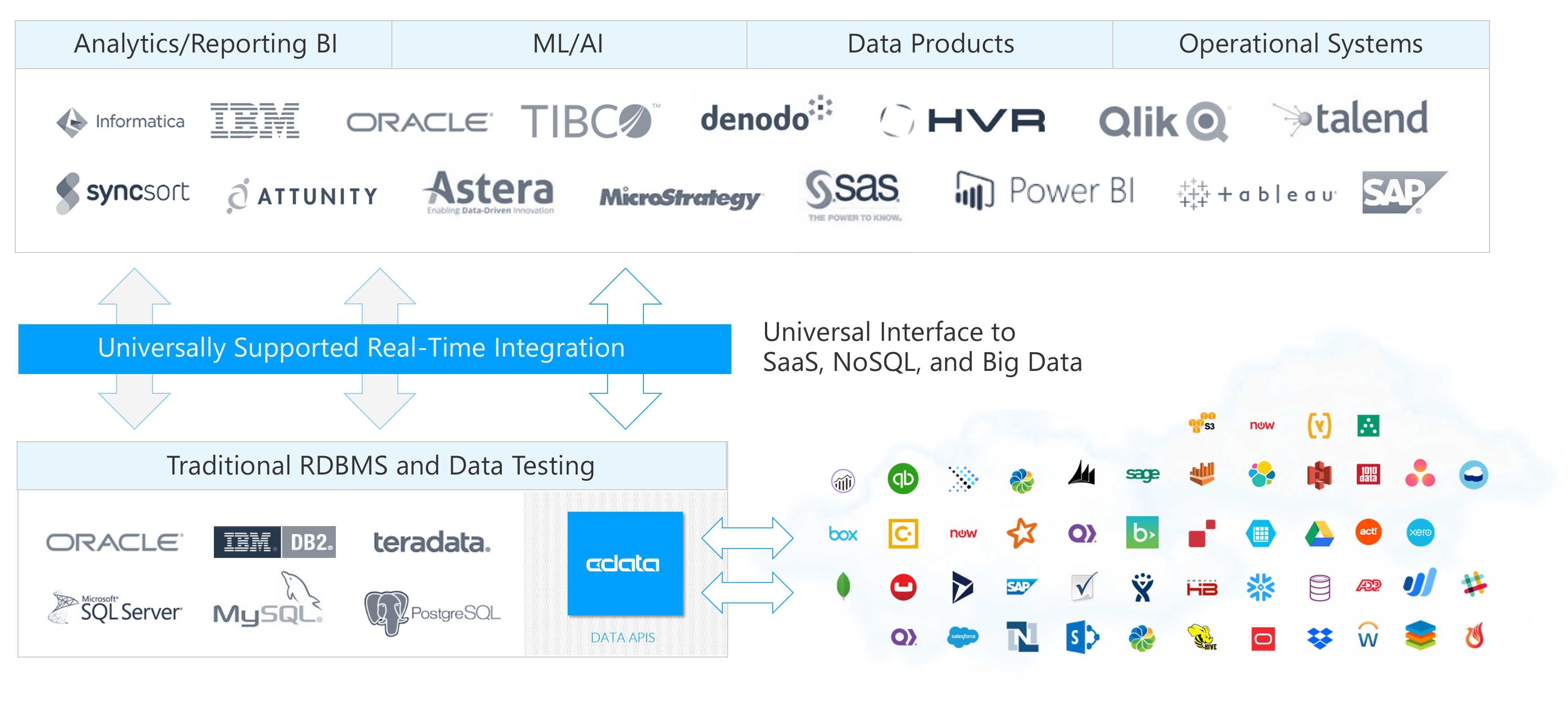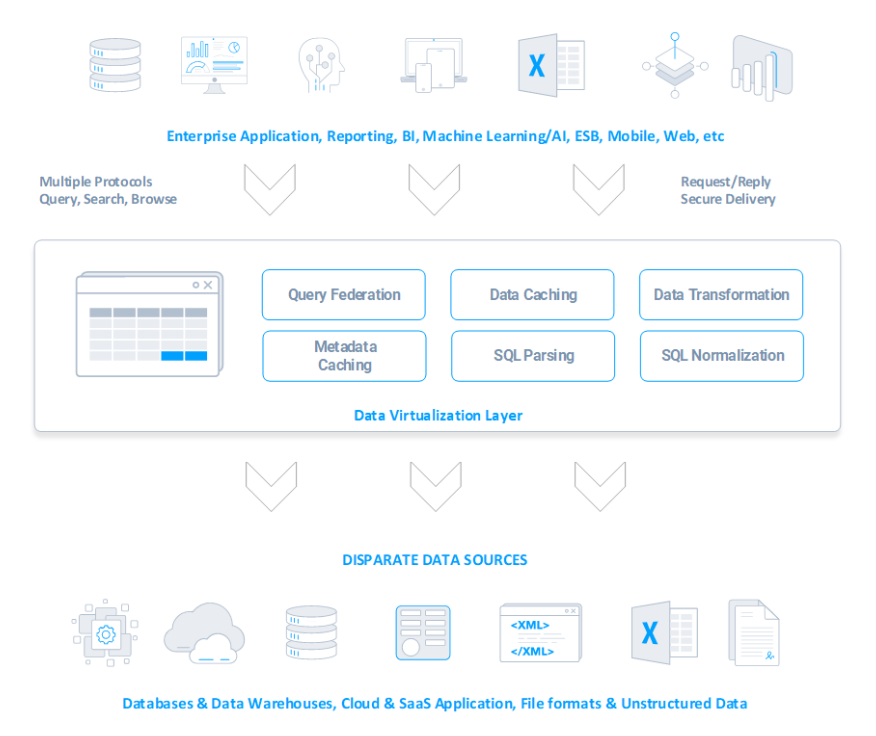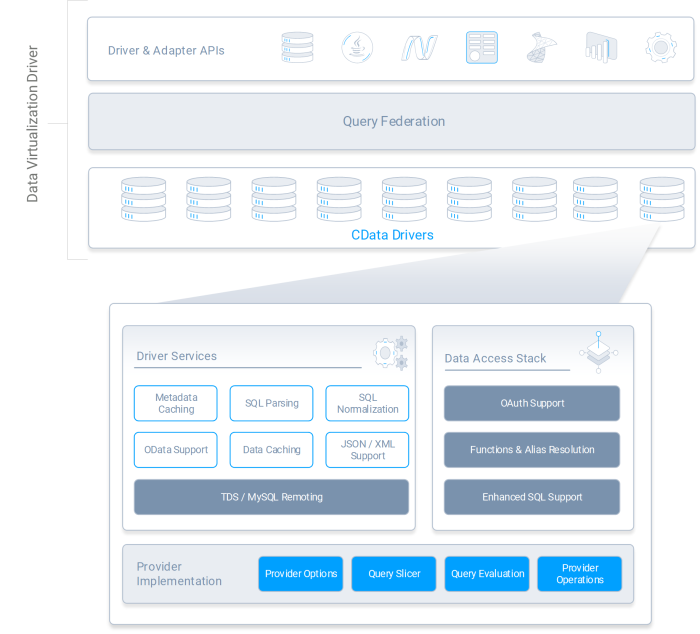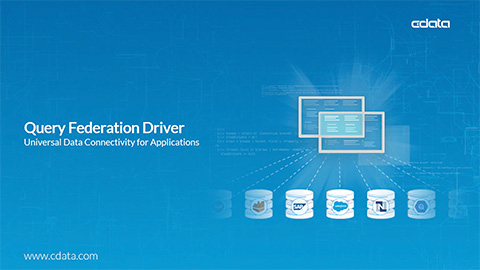Discover how a bimodal integration strategy can address the major data management challenges facing your organization today.
Get the Report →EMBEDDED DATA VIRTUALIZATION
A Logical Data Layer For Any Data, Anywhere
Remove data bottlenecks with a consolidated connectivity layer that unifies data access across data sources.

Embedded DV in Action
Watch the Query Federation Driver overview video for a first-hand look at how applications can simplify and consolidate data connectivity through a common interface:
WATCH THE QUERY FEDERATION OVERVIEWLearn more about CData Connect Cloud.
Connectivity for Data Virtualization
In addition to being embedded in leading data integration and virtualization solutions, CData Driver technologies can be easily paired with common tooling to enhance virtualized data connectivity. With universal support for common data access standards like ODBC, JDBC, ADO, and Python, our drivers can be easily configured to work with Federated Queries, SQL Server Linked Servers, Polybase, and other popular DV technologies.
Using CData Drivers With Low-Code Platforms
Additional Resources
Drivers & Data Virtualization
Want to learn more about how CData Drivers and Adapters enhance data connectivity through data virtualization technologies? Contact us below, and let's talk.






